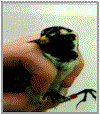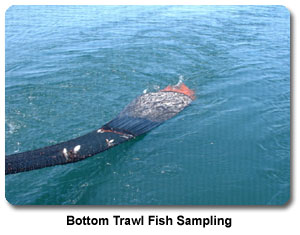- Home
- About S&T
- Taxa/Organisms
- Ecosystems
- Issues
- Methods & Tools
- Reports & Publications
- Location
- Search
Publisher: USGS | Science Center: Western Fisheries Research Center (WFRC, Seattle) | Format: URL
wfrc.usgs.gov — Over the past 150 years, land reclamation activities have resulted in loss of significant amounts of tidal marshes (sometimes referred to as inter-tidal wetlands, the estuarine zone that is alternately flooded and exposed) in San Francisco Bay and the Sacramento-San Joaquin Delta (Bay/Delta). Recently, in an effort to halt or reverse the decline More...

Publisher: USGS | Science Center: Western Fisheries Research Center (WFRC, Seattle) | Format: URL
wfrc.usgs.gov — Threatened and endangered salmonids in the Pacific Northwest often use backwaters and wetlands as they migrate toward the ocean, however our understanding of the role of wetlands to juvenile salmonids is limited. The major Objective of this study was to determine whether juvenile steelhead were being tapped on the wetland during spring, and More...

Publisher: USGS | Science Center: Patuxent Wildlife Research Center (PWRC, Laurel) | Format: URL
www.pwrc.usgs.gov — Information about ecotoxicological exposure and its effects on terrestrial vertebrates residing in estuarine and coastal habitats like the Atlantic, Gulf and Pacific Coasts, Alaska and Hawaii, as well as the Great Lakes. These vertebrates include birds, mammals, amphibians and reptiles. The data is a compilation of results from computerized More...

Publisher: USGS | Science Center: Forest and Rangeland Ecosystem Science Center (FRESC, Corvallis) | Format: URL
fresc.usgs.gov — An overview of research that defines the distribution and habitat requirements of amphibians and reptiles in southern Oregon, mostly in old-growth forests or alpine habitats. Includes links to USGS publications resulting from this research.

Publisher: Other Federal Agency (National Wildlife Federation) | Format: URL
www.nwf.org — Frogwatch USA website is a long-term frog and toad monitoring program managed by the National Wildlife Federation in partnership with the United States Geological Survey. This resource provides valuable information about frog and toad distributions, population trends at individual wetlands, and yearly patterns of frog and toad breeding activity.

Publisher: USGS (Snake River Field Station (SRFS)) | Science Center: Forest and Rangeland Ecosystem Science Center (FRESC, Corvallis) | Format: URL
srfs.wr.usgs.gov — Lapland Longspurs (Calcarius lapponicus) are a common breeding passerine on the tundra of northern Alaska and throughout the holarctic. This study has two components: the design of an area census survey method for Lapland longspurs with applicability to other highly visible species in open habitats, and 2) the description and quantification of the More...

Publisher: USGS | Science Center: Great Lakes Science Center (GLSC, Ann Arbor) | Format: URL
www.glsc.usgs.gov — The USGS Great Lakes Science Center (GLSC) has a long history of significant contributions to the understanding of aquatic resources in the Great The main focus of the Center's research is on the long-term dynamics of native and non-native aquatic species and the sustainability of Great Lakes fisheries. Since the Center was established, the fish More...
